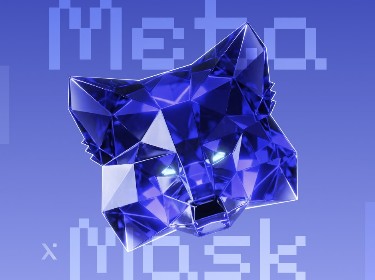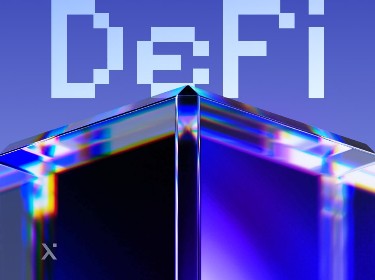You’re dealing with disjointed supply chains, slow and costly international payments, and the endless, frustrating task of making sure everyone's records match up. This is precisely the headache that enterprise blockchain is designed to solve.
For businesses, blockchain technology is really practical. It’s like a highly secure, shared digital notebook that every authorized partner has a copy of. When a new entry is made, for example a shipment leaving a warehouse or a payment being sent, then the notebook updates for everyone at the same time, and that entry can never be erased.
Forecasts show that the global blockchain market is rocketing to over $400 billion by 2030. In fact, a recent survey found that a staggering 81% of the world’s largest public companies are already putting enterprise blockchain to use. They’re not doing it to be trendy but doing it to increase security, boost efficiency, and cut costs.
Here at PixelPlex, we’ve been in the trenches helping businesses implement these solutions to tackle real-world challenges. In this article, we’ll break down exactly what enterprise blockchain is, show you how it’s being used today, and give you a straightforward guide to getting started.
What is an enterprise blockchain?
Before we go any further, let’s nail down this definition. What is an enterprise blockchain? And what makes it different from the technology behind the cryptocurrency concept?
The easiest way to think about it is to compare the public internet to a private company intranet. The internet is open for everyone. A corporate intranet is locked down, and you need permission to get in. Public blockchains are like the internet, they are permissionless. But an enterprise blockchain is like that intranet – it’s permissioned. This means it’s a private, members-only club where you control who gets in.
That control is what makes blockchain development services work for businesses. You need to know who you’re dealing with and protect sensitive data. For many enterprises, integrating crypto payment solutions development into their blockchain systems is a key step to enable secure digital transactions tailored to their unique needs. Now, let’s quickly look at what makes up what is blockchain enterprise systems:
It’s a members-only club (permissioned)
You decide who gets to join the network. This isn’t the Wild West; it’s a secure environment for trusted partners. This is why over 75% of enterprise applications are built on private or consortium (group-owned) blockchains.
Everyone has the same records (shared ledger)
Imagine every company in your supply chain sharing one single, identical spreadsheet that updates in real-time. That’s a shared ledger. It eliminates the “my records vs. your records” arguments that waste so much time and money.
You can’t fake the history (immutability)
Once a transaction is logged, it’s there for good. It’s cryptographically sealed, and any attempt to change it would stick out like a sore thumb to everyone else on the network. This feature is a game-changer for smart contract audit services and building trust.
It automates the rules (smart contracts)
A smart contract development is basically a “when/then” agreement that runs itself. For example: “WHEN the shipment is logged as ‘delivered’ in the port, THEN automatically release payment to the supplier.” It’s estimated that smart contracts can reduce the operational costs of business agreements by 40-50%.
Blockchain vs. DLT: Full Guide
Blockchain in IoT: Data Everywhere, Trust Nowhere?
Blockchain Technology ETFs: A Smarter Way to Invest in Crypto Without Buying Bitcoin
Private, group, or hybrid
Within the world of enterprise blockchain, you have choices:
- Private blockchain development: One company runs the whole workflow. This is great for internal processes, like managing internal finances or securing company records, without involving outside partners.
- Consortium blockchain: A group of companies comes together to run the network. This is the most popular model for supply chains, finance, and healthcare, where collaboration is key. A recent report noted that consortium projects have a higher success rate because the shared investment and governance create stronger buy-in.
- Hybrid blockchain: This approach mixes a private system with a public one. You might handle most of your business on a private chain but use a public chain to verify certain high-value transactions, giving you both privacy and public-grade security.
What are the enterprise blockchain benefits?
![]()
Companies aren’t spending billions on this technology for fun. The push for enterprise blockchain adoption comes from some very real, bottom-line benefits. Here are the main reasons businesses are getting on board.
Single source of truth
Miscommunication and data conflicts cost businesses a fortune. As we mentioned before, with blockchain, everyone is looking at the same data, all the time. This transparency can reduce administrative costs in supply chains significantly by simply eliminating disputes and the need for constant back-and-forth reconciliation. This is one of the core enterprise blockchain benefits.
Security
Centralized databases are a hacker’s favorite target: you breach one system, and you get everything. By decentralizing the data, blockchain removes that single point of failure. The result? Within years blockchain will be a foundational technology for the majority of global enterprises.
Efficiency and speed
Many business processes are stuck in the slow lane, waiting for manual approvals and intermediaries. By automating these steps with smart contracts, enterprise blockchain hits the accelerator. In trade finance, for example, blockchain has been shown to cut the time it takes to process and approve financing from weeks to just a few hours.
Painless compliance
Audits are a nightmare for many companies. Blockchain provides a perfect, unchangeable, time-stamped trail of every single transaction. This makes life easier for auditors and can reduce compliance costs by as much as 50% in heavily regulated industries like finance and healthcare.
Private Blockchain Development Explained
Blockchain Analysis Explained: Use Cases & Data Insights
Smart Contract Development Cost Demystified: What Every Business Should Know
Enterprise blockchain use cases
![]()
Theory is great, but let’s look at where enterprise blockchain is already making a real difference. These are live enterprise blockchain use cases changing how industries work.
Making supply chains see-through
Today’s supply chains are so complex that it’s nearly impossible to track a product from start to finish. This leads to counterfeiting, delays, and a total lack of visibility.
- The problem: Counterfeit goods cost the global economy over $500 billion a year. On top of that, tracking and disputes add massive overhead.
- The blockchain fix: Creating a digital “passport” for every single product on a blockchain. At each step, from the farm to the factory to the freight forwarder to the store, the product’s status is scanned and logged.
Walmart uses blockchain to track food provenance. They can trace a product back to its original farm in seconds, a process that used to take a week. De Beers, the diamond giant, uses its Tracr platform to track diamonds, ensuring they are conflict-free and authentic, protecting over $2 billion in assets.
Giving healthcare a health check
Patient data is a mess. It’s locked away in different hospital and clinic systems that don’t talk to each other, creating risks and inefficiencies.
- The problem: Lack of data interoperability costs the U.S. healthcare system over $30 billion annually. Patients have little to no control over their own records.
- The blockchain fix: A patient-controlled health record on a blockchain. You, the patient, hold the key and can grant temporary access to a doctor, hospital, or insurer.
The National Health Service in the UK has trialed programs using blockchain to track and manage vaccine supplies, ensuring temperature control and authenticity. In the US, companies like BurstIQ offer platforms that help people manage and monetize their own health data securely, with projections suggesting the blockchain in the healthcare market will exceed $4 billion by 2026.
Check out Patientory – blockchain-based healthcare app we created recently →
Shaking up the world of finance
Finance is one of the biggest arenas for enterprise blockchain solutions. The technology is cutting out middlemen and making transactions faster and cheaper.
- The problem: International payments can take 3-5 days to clear and involve high fees. Trade finance is incredibly paper-intensive and slow.
- The blockchain fix: For payments, blockchain allows for direct, peer-to-peer transfers that can settle in minutes, not days, and reduce transaction costs by 40-80%. For trade, all parties can view and approve digital documents on a shared platform. This foundational automation also paves the way for more advanced on-chain finance, such as DeFi yield farming development, where smart contracts can automatically manage and optimize capital across liquidity pools to generate returns.
JPMorgan’s JPM Coin processes billions of dollars in daily transactions for its institutional clients. A consortium of European banks created the we.trade platform, which has helped finance over €50 million in trades for small businesses by simplifying the process.
Making real estate more fluid
Buying and selling property is famously slow, expensive, and paperwork-heavy. Blockchain is helping to change that.
- The problem: Real estate is an illiquid asset. It’s hard to sell quickly, and transaction costs (like title searches and fees) can be very high.
- The blockchain fix: Tokenization services. This means converting the rights to a physical property into a digital token on a blockchain. These tokens can be easily traded, and you can even sell fractions of a property (fractional ownership).
Expensive property in fancy locations are being tokenized and sold on a blockchain platform, showcasing how it can be done. The market for real estate tokenization is projected to reach $16 trillion by 2030, with real estate being a major component.
Blockchain vs. Database – what to choose for your business? Answering here →
What’s coming next? Hot trends in enterprise blockchain
The technology isn’t standing still. Here are the trends you need to watch.
Tokenizing everything (RWAs)
This is the big one. We’re moving beyond just real estate to tokenize everything from stocks and bonds to fine art and carbon credits. BlackRock, the world’s largest asset manager, recently launched its first STO development fund, a clear sign that this is going mainstream.
Blockchains talking to each other (interoperability)
Right now, many blockchains operate in their own little worlds. The next big step is building bridges between them, creating an “internet of blockchains” where value and data can flow freely and securely.
AI and IoT
The real magic happens when you combine blockchain with other tech. Imagine IoT sensors on a shipping container recording temperature data directly to a blockchain, and an AI development that analyzes this data to predict spoilage or reroute shipments. This is already being piloted in logistics.
The push for green blockchain
The energy usage of Bitcoin has given blockchain a bad rap. The enterprise blockchain world is different, overwhelmingly using low-energy models like Proof-of-Stake, which is over 99% more energy-efficient than Bitcoin’s Proof-of-Work model. Sustainability is now a key selling point.
How to get started
Ready to explore this for your own business? Here’s a straightforward approach.
| Phase | Key activities |
| 1. Strategy | Define the problem, goals, and business case |
| 2. Design | Choose a platform, design architecture, and build a prototype |
| 3. Development | Code the solution, integrate with systems, and test for security |
| 4. Deployment | Launch the live network and onboard all users |
| 5. Maintenance | Monitor performance, manage upgrades, and plan for growth |
Best practices for a project
- Solve a real problem: Don’t use blockchain just to look innovative. Find a real, expensive, time-consuming problem in your business. Is it invoice fraud? Is it supply chain delays? Start there. Projects with a clear ROI are more likely to succeed.
- Get everyone on board: You need buy-in from your team, from finance to legal to IT. Build a solid business case showing the “before” and “after.” What will you save? How will it make life easier?
- Start small, win, then grow: Don’t try to boil the ocean. Pick a small, focused pilot project. The goal is to get a quick win, learn from it, and use that success to justify expanding the project.
How to pick a team
Finding the right development partner is crucial. Here’s what to look for:
- Look for scars, not just resumes: You want a team that has actually built and launched real-world blockchain projects. Ask them about projects that went wrong and what they learned. Their experience is your shortcut.
- Check their tech stack: Do they have deep expertise in platforms like Hyperledger Fabric or R3 Corda? Do they understand smart contract security inside and out?
- Make sure they speak clearly: A great partner will spend more time asking about your business problems than they do talking about technology. They should be focused on your results.
Not sure about your future IT vendor? Here’s our top list →
Checking your IT infrastructure
- Choose the right platform: The platform you build on matters. Some are better for finance, others for supply chain. Your choice will impact speed, scalability, and cost.
- Plan for integration: Your blockchain integration services need to talk to your old systems (like your ERP or CRM). A solid integration plan is not optional, it’s essential for success.
- Get a handle on governance: If you’re building a network with partners, you need to agree on the rules upfront. Who gets to make changes? Who validates transactions? Figure this out early.
Top enterprise blockchain platforms
![]()
Choosing a platform is one of the most critical first steps in your enterprise blockchain adoption journey. The right choice can accelerate development and help you fully realize the enterprise blockchain benefits, while the wrong one can lead to headaches. Here are some of the leading enterprise blockchain solutions on the market today.
Hyperledger fabric
Who it’s for: What you need to know about Hyperledger? This is the swiss-army knife for supply chain management, manufacturing, and IoT. It’s a flagship project of the Linux Foundation.
Key features: It has a unique modular architecture that allows you to plug and play components like consensus mechanisms and membership services. It’s known for its robust permissioning system, which lets you control exactly who sees what data (down to the individual transaction).
Why choose it? If you need high degrees of privacy and data confidentiality within a complex business network, Fabric is a top contender.
R3 Corda
Who it’s for: Built from the ground up for finance, insurance, and other highly regulated industries.
Key features: Unlike other platforms that broadcast all data to all peers, Corda shares data only on a need-to-know basis. This point-to-point communication makes it a perfect fit for industries where data privacy is non-negotiable.
Why choose it? If you’re in finance and need to transact directly and privately with other institutions while maintaining an ironclad audit trail, Corda was built for you.
ConsenSys Quorum
Who it’s for: Enterprises that want to use Ethereum’s popular tools and smart contracts but in a private, controlled setting.
Key features: Quorum is essentially an enterprise-grade version of Ethereum. It offers faster transaction speeds and advanced privacy features (like private transactions) that aren’t available on the public Ethereum network.
Why choose it? If your development team is already familiar with Ethereum’s programming language (Solidity) or you want to tap into the massive Ethereum ecosystem, Quorum is the logical choice.
Hyperledger Besu
Who it’s for: Businesses that want an Ethereum-compatible client that can work on both public and private networks.
Key features: Besu is another open-source Ethereum client from the Hyperledger family. Its key advantage is its flexibility: it can connect to the public Ethereum mainnet or be used to create private, permissioned networks. It offers multiple consensus algorithms.
Why choose it? For companies that want the option to bridge public and private networks or require a highly flexible, open-source platform. Hyperledger development is a great example of an enterprise blockchain that offers maximum versatility.
Stellar
Who it’s for: Stellar blockchain is primarily focused on cross-border payments, remittances, and asset tokenization.
Key features: Stellar is designed for speed and low cost. Its network can process thousands of transactions per second for a fraction of a cent. It excels at issuing and exchanging digital tokens representing any kind of asset (currencies, commodities, etc.).
Why choose it? If your core business involves moving money across borders or creating tokenized assets, Stellar’s specialized design makes it incredibly efficient.
Tezos
Who it’s for: Organizations looking for a secure and future-proofed platform, especially in finance and asset management.
Key features: Tezos’s standout feature is its self-amending capability. It can upgrade itself without needing to split the network (a “fork“), which makes it highly adaptable over the long term. It also supports formal verification of smart contracts, providing a higher degree of security.
Why choose it? If long-term stability, security, and a clear upgrade path are your top priorities, Tezos is a compelling option.
It’s not all smooth sailing. It’s important to be aware of the hurdles.
- The rules are still being written: Regulatory uncertainty is the #1 cited barrier to enterprise blockchain adoption. The legal landscape is still catching up to technology.
- Getting systems to talk is hard: Integrating a new blockchain platform with decades-old legacy systems can be a major technical challenge.
- Finding the right people: There’s a global shortage of experienced blockchain developers, which can make it hard to build a team. This is a key reason why many businesses choose to work with a specialized firm.
Blockchain in Payment Services: Trends, Technologies, and Development Best Practices
Conclusion
![]()
So, we’ve covered a lot of ground, it’s a lot to take in. But if you take away just one thing, let it be this: enterprise blockchain is no longer a general concept. It’s a practical tool that businesses are using right now to solve age-old problems.
At the end of the day, it all comes down to creating a foundation of trust and efficiency for your operations. It means fewer disputes with suppliers, faster and more secure transactions, less time spent on manual reconciliation, and a permanent, verifiable record of your most important business activities. The goal isn’t to “do blockchain”, it’s to build a more resilient and reliable business.
The journey into this technology doesn’t require a massive, company-wide overhaul from day one. The most successful projects often start small, by identifying one specific, nagging problem and applying a focused blockchain solution to fix it. Proving the value on a smaller scale is the best way to build momentum and get the buy-in you need for larger initiatives.
This path can feel complex, but you definitely don’t have to walk it alone. That’s what our team at PixelPlex is here for. Whether you have a fully-formed project idea or just a persistent business challenge you think this tech could solve, our enterprise blockchain development company is ready to sit down, listen, and help you figure out the next steps. Let’s talk about how we can make your business work better, together – contact us today.
FAQ
A regular database is controlled by a single entity. An enterprise blockchain creates one unchangeable source of truth that multiple companies can trust without needing a middleman. It’s specifically designed for secure, multi-party collaboration.
Yes. The ROI comes from cutting operational costs, reducing fraud, and automating manual work. For example, businesses have cut supply chain admin costs by up to 20% and reduced cross-border payment fees by over 40%.
Finance, supply chain, and healthcare are the clear leaders. They are successfully using it to accelerate payments, track goods with near-perfect accuracy, and securely manage sensitive data.
The biggest mistake is focusing on the technology instead of the business problem. Successful projects don’t start with “we need a blockchain”; they start with “we need to solve this specific, costly problem that involves multiple partners.”
A focused MVP development project to solve a single problem can take 3-6 months from design to launch. A full-scale, complex enterprise system can take a year or more. The key is to start small to prove the value quickly.




